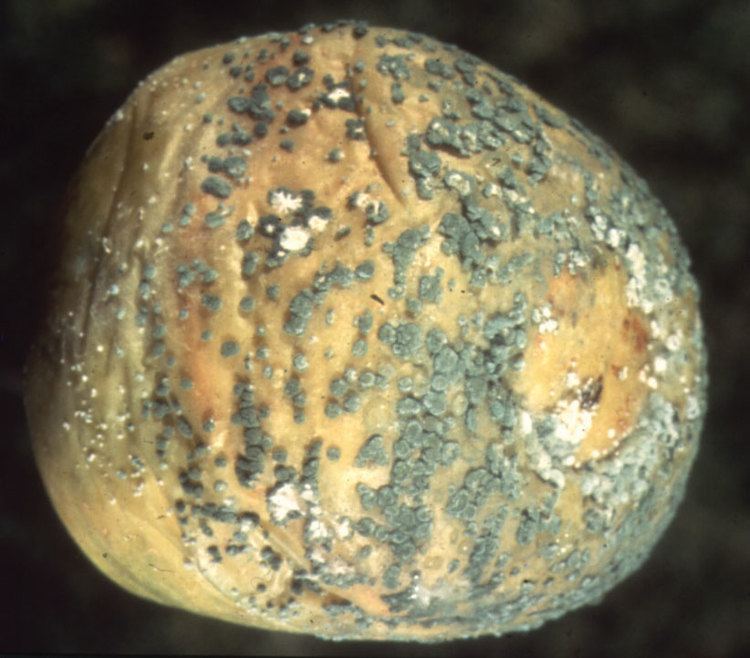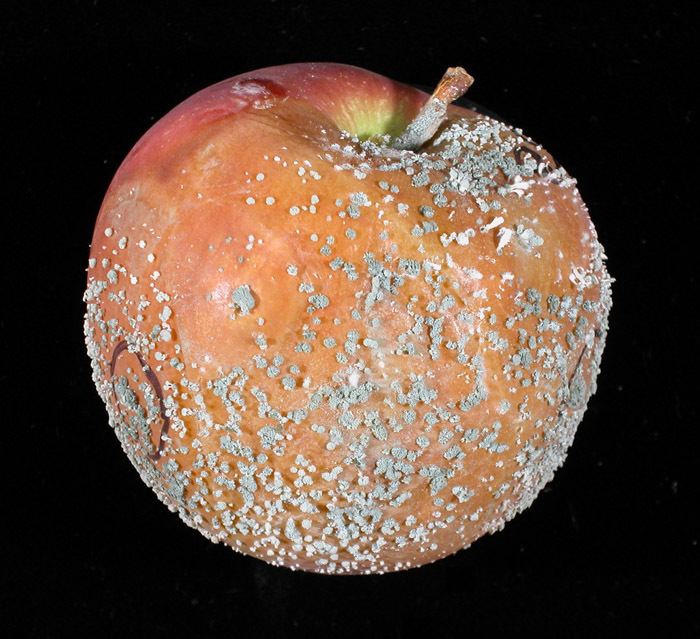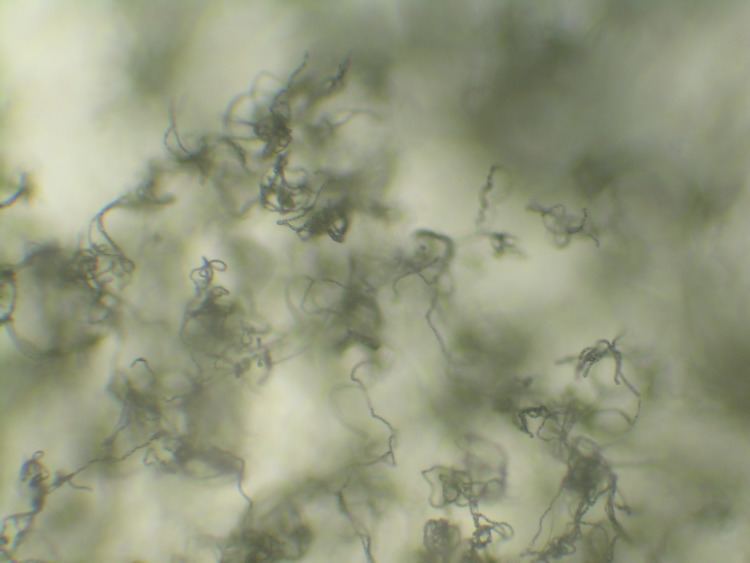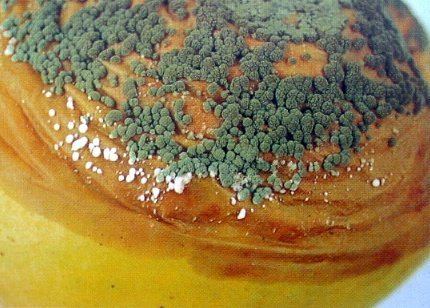Higher classification Penicillium | Scientific name Penicillium expansum Rank Species | |
 | ||
Similar Penicillium, Penicillium digitatum, Penicillium italicum, Botrytis cinerea, Black bread mold | ||
Penicillium expansum fungi kingdom
Penicillium expansum is one of the most prevalent post harvest rots that infects apples.
Contents
- Penicillium expansum fungi kingdom
- Hosts
- Diagnosis
- Environment
- Disease Cycle
- Management
- Importance
- References
Although it is a major economical problem in apples, this plant pathogen can be isolated from a wide host range, including pears, strawberries, tomatoes, corn, and rice. This mold also produces the carcinogenic metabolite patulin, a neurotoxin that is harmful in apple juice and apple products. patulin is produced by the fungi when it rots the host. The levels of patulin in food products is a health concern because many are consumed by young children. In addition, a second secondary metabolite citrinin is produced as well. Furthermore, it is also one of the oldest known species of Penicillium recorded and has been used for continuous research and studies. It is a psychrophilic blue mold and ubiquitous throughout the soil.
Hosts

Penicillium expansum is a post harvest rot that affects a number of different hosts, including citrus fruits, apples, pears and cherries.

While P. expansum has a wide and variable host range, the symptoms are very similar across all hosts. With a P. expansum infection, initial infected spots appear post harvest while fruit is in storage, and a sharp visible contrast can be seen between diseased and healthy tissue. Often, decaying tissue can be easily "scooped" out of the surrounding healthy tissue. The initial infected spots that appear will be light brownish in color, and the tissue beneath these brown spots will be soft and mushy, and have a watery consistency. The initial infection sites often occur in injured areas of the fruit, somewhere that has been punctured, bruised or otherwise injured. Blue to bluish green spore masses will appear on the infected fruit, starting with the older lesions. These spore masses will initially appear as white mycelium on the surface of the infected fruit, then turn blue to bluish green in color. Fruit affected by P.expansum can be expected to have an earthy, musty odor to it. Lesions resulting from wounds can be expected to be one to one and a quarter inches in diameter eight to ten weeks after infection if kept under cold storage conditions. Age factors into P.expansum infection in that overripe or mature fruits are most susceptible to infection, while those picked underripe are less likely to become infected with P.expansum.

In apples, the colors of the lesions may vary in color slightly with variety, from lighter-brown on green and yellow varieties to dark-brown on the deeper-red and other darker-color varieties. Varieties particularly susceptible to P.expansum infection include McIntosh, Golden Supreme, and Golden delicious.

In cherries, varieties found to be particularly susceptible to P.expansum infection were mainly the early varieties, including Navalinda and Burlat. Both sweet and sour cherry varieties are affected by P.expansum.
Diagnosis

Previously, P. expansum was identified mainly by examining morphological characteristics and identifying the range of secondary metabolites produced. Penicillium infection can be detected by testing for the presence of the secondary metabolite patulin, which is produced by some Penicillium species, although this method is not species-specific as a number of different Penicillium species produce patulin. Patulin presence can be assayed using high-performance liquid chromatography with ultraviolet detection. However, this method is often very time-consuming, as it involves growing the microorganism in culture, then suspending spores from that culture into solution using a wire loop. After isolating spores from the suspension, these would have to be observed under a microscope and morphological key would be used to rule out certain species and determine what species was causing that particular infection. Not only is this process time-consuming, but there are about 150 different species in the Penicillium genus, and only a small number of these species affect agriculturally significant crops. A newer method was developed involving polymerase chain reaction (PCR), that amplifies a species-specific gene, allowing for easier identification of a specific Penicillium species. This identification method is possible due to the sequencing of regions of the genomes for different Penicillium species.
Environment

P. expansum grows best in wet, cool (<25C) conditions. P. expansum was found to grow most efficiently in a temperature range of 15-27 degrees Celsius, with some growth still exhibited at lower and higher temperatures, albeit slower. P. expansum grows best in wet conditions, and that growth rate was fastest at a relative humidity of 90%. It has also been found that not only P. expansum infection acidifies the host via the secretion of organic acids, but also that the acidification of potential hosts increased P. expansum development, indicating a link between environmental acidity and P. expansum virulence.
Disease Cycle
P. expansum infects a fruit only when there are wounds that the conidia are able to enter. Usually, puncturing, bruising, and limb rubs occur during harvesting, packaging, and processing of the fruit, all of which providing sites through which the spores can enter the fruit. Conidia can be found throughout the soil, decaying debris, and tree bark, and because the fungi is psycrophylic it is able to survive cold termperatures. Furthermore, it will also be able to cause an infection during any season. Also, the conidia may be isolated from the air of the orchard and packaging house, on the walls of the packaging houses, and from the water and fungicide solution that the apples and fruits are dunked in before processing and packaging. Since the conidia exists and survives in every step and environment of the growth, harvesting, processing, shipping, and storage processes, the wounded or damaged fruit may be inoculated at any one or more of these phases. After the conidia have access into the fruit or the stem, the conidia germinate and form a germ tube. This germ tube will continue to grow into hyphae and eventually mycelia to colonize the area. Successful growth of the fungus is reliant on the conditions of the environment. The closer the environment is to the optimum growing conditions, specified in the previous environment section, the more severe the infection on the fruit. The rot, a localized infection, is brownish, soft, and watery and can be scooped out of the infected fruit, leaving behind fresh tissue. Although the tissue may look safe to eat, it has been advised not to eat it because the fungus produces the toxin patulin.
If the fungus has colonized the fruit with mycelium, the formation of conidiophores occurs on the surface or subsurface of the hyphae. The conidiophores are mostly smooth-walled terverticillate penicilli. A terverticillate pencilii has multiple branch points below the phialides, the cells that the conidia are attached to. However, at times, the penicilli may be rough or biverticillate (only two levels of branching). The phialides are packed close together with nearly a cylindrical shape. The conidia themselves are smooth and elliptical. The conidia have a "dull-green" color and are disseminated by wind currents. P. expansum usually infects only mature or overly-ripe fruit.
Sexual reproduction has not been observed in nature for P.expansum.
Management
Due to the susceptibility to infection of mature and overripe fruit, post-harvest treatment of fruit with fungicides has traditionally been the most common method of combating P. expansum. Other methods of control can be used in addition to fungicides to reduce the severity of the disease. Proper sanitation and careful handling of the fruit are two non-chemical methods. By reducing the amount of orchard soil either on the fruit or in transportation containers, the amount of the fungus in proximity to the fruit is greatly reduced. Since the fungus needs a wound to infect, careful handling can limit the amount of infection even if the fungus is present. Chemical treatment with a chlorine bath has been shown to be effective in reducing the amount of spores and the resulting decay. Also, biofungicides using active ingredients such as bacteria and yeast have been successful in preventing infection but are ineffective against existing infections.
Importance
The mycotoxin produced by P. expansum is patulin. Patulin is a neurotoxin that can be found in apples and apple products such as juice and cider. China and the United States are the leading producers of apples in the world. In all, roughly 69 million tons of apples were grown worldwide. In the United States, approximately 60% of all apples are grown in Washington state. In Washington, 10-12 billion apples are hand-picked each year and the industry is the largest in the state. Considering the size of the apple product industry and the large number of people that may come into contact with infected fruits, control of the P. expansum is vitally important.
